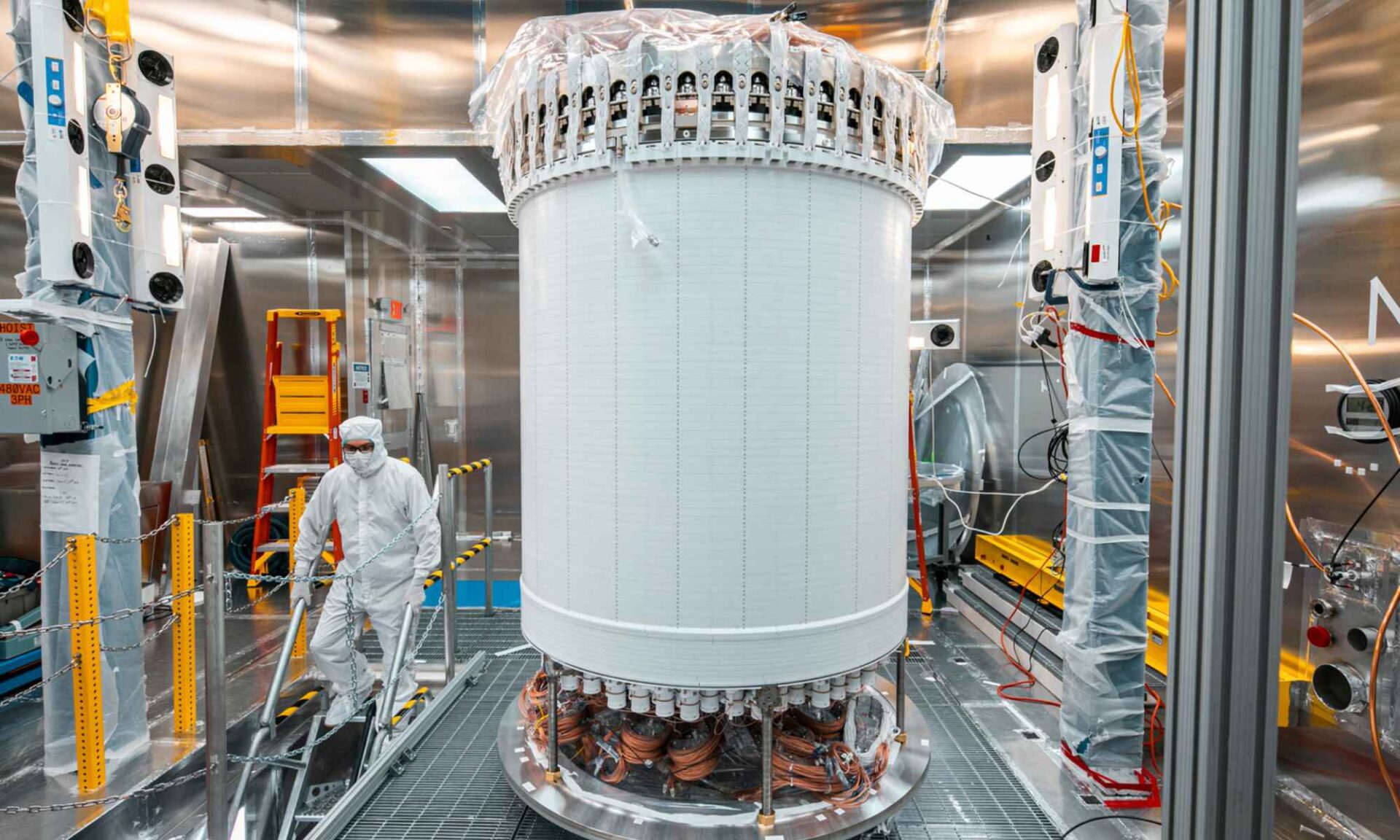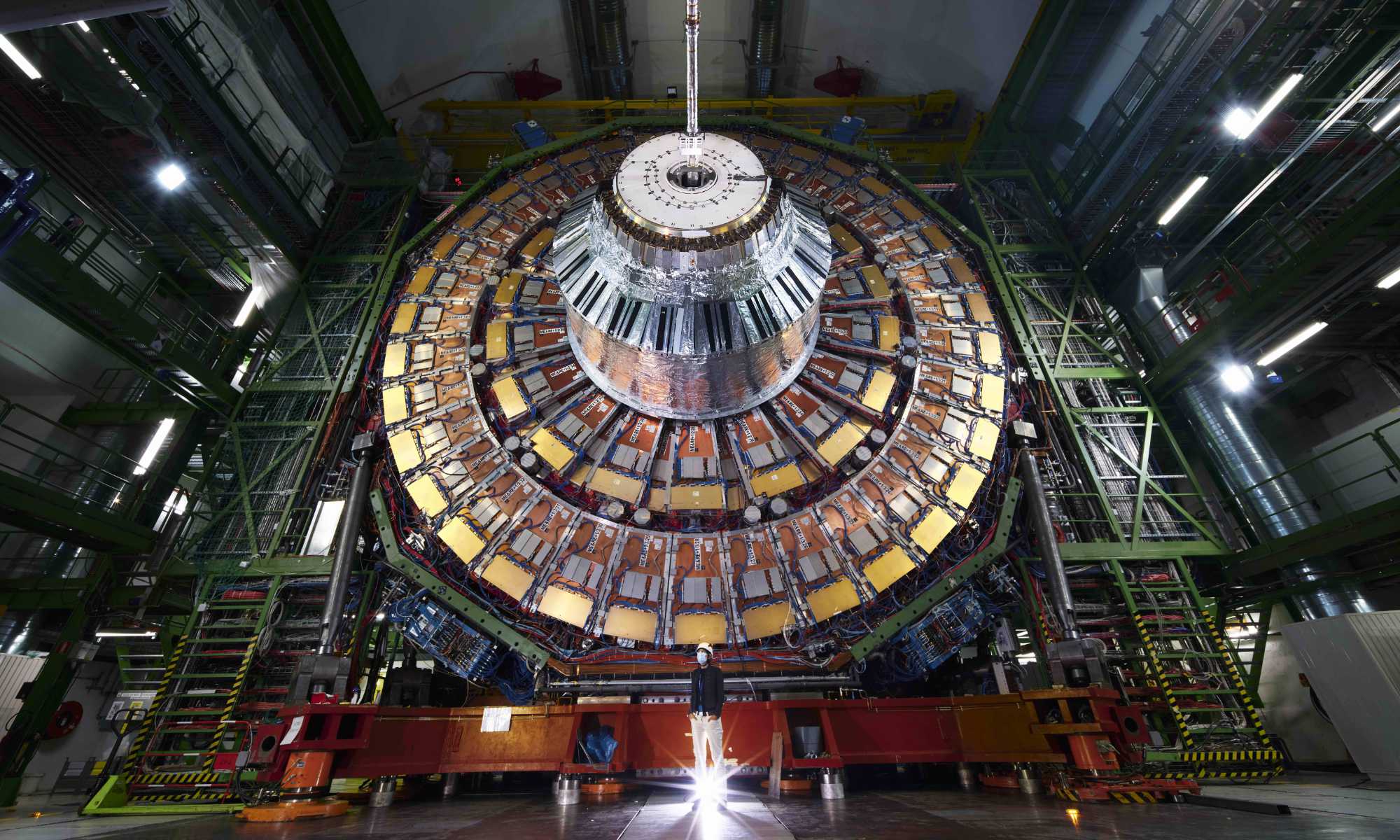Researchers collaborating on the world’s most sensitive dark matter detector credit Rochester’s contributions in detecting weakly interacting massive particles, or WIMPs.
Scientists have searched more widely than any before for the elusive makeup of so-called dark matter, thanks to a data acquisition system developed at the University of Rochester.
The result was announced by Lawrence Berkeley National Laboratory, which leads an experiment using the world’s most sensitive dark matter detector, the LUX-ZEPLIN (LZ), from 4,850 feet below the surface at the Sanford Underground Research Facility in South Dakota.
Eight students and researchers from the University of Rochester are part of the LZ collaboration, which consists of roughly 250 scientists from 38 institutions around the world. The Rochester group is led by Frank Wolfs, a professor in the Department of Physics and Astronomy.
“It is a reflection of the quality of our team that a small group such as ours can have such a major impact on one of the most intriguing problems in modern physics,” Wolfs says.
5X better result with data acquisition system from Rochester
The galaxies of the universe are thought to be swaddled in dark matter. What has puzzled astronomers, though, is what makes up dark matter.
The prevailing theory is that it consists of WIMPs, or weakly interacting massive particles. Although no one has ever seen a WIMP, scientists at the LZ collaboration have been actively looking.
Now, according to the LZ collaboration, their search has probed deeper than any previous experiment partly because of the University of Rochester’s contribution. The experiment’s new result further limits what WIMPs could be.

“If you think of the search for dark matter like looking for buried treasure, we’ve dug almost five times deeper than anyone else has in the past,” says Scott Kravitz, LZ’s deputy physics coordinator and a professor at the University of Texas at Austin. “That’s something you don’t do with a million shovels. You do it by inventing a new tool.”
One of the new tools is the digital electronics hardware for the LZ data acquisition system built in Rochester.
The hardware was developed by a small local electronics company, SkuTek Instrumentation, dedicated to serving physics researchers worldwide. The firmware for the data acquisition system was developed at the University of Rochester.
Leading efforts to better understand WIMPs
Overseeing the operation of the electronics system are senior scientist Dev Ashish Khaitan and senior research engineer Eryk Druszkiewicz of the University of Rochester.
“It is both exhilarating and humbling to build the tools that could help us unlock the deepest mysteries of the universe with the talented Rochester dark matter group,” Khaitan says.
The Rochester group leads the efforts to explore unique couplings of WIMPs to baryonic matter and is pioneering the search for neutrino signals from distant core-collapse supernovae—a signal that might only occur three times per century in the Milky Way.
“It is exciting to be processing signals at rates in excess of half a terabyte per second continuously for years when trying to solve the puzzle of the universe’s composition,” Druszkiewicz says.
The latest result analyzes 280 days’ worth of data. The experiment plans to collect 1,000 days’ worth of data before it ends in 2028.





